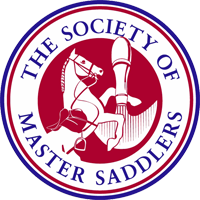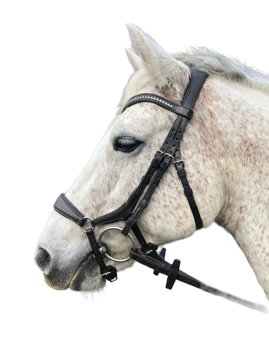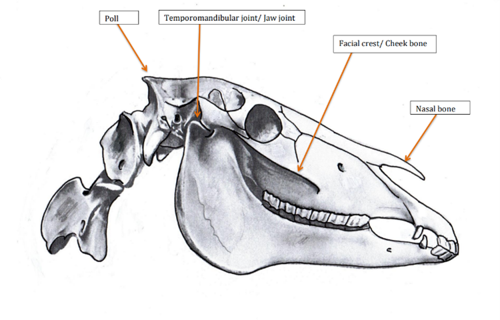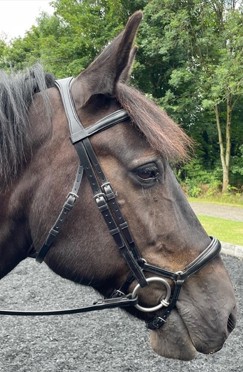
Riders are now much more aware about the importance of bridle fit and how it can impact their horse’s comfort, welfare and performance.
In this blog, Society of Master Saddlers (SMS) Qualified Bridle Fitters Frances Roche and Catherine Baker give you their advice on how you can check that the fit of your bridle is as good as possible.
When it comes to fitting a bridle, it’s important to remember that all horses are different and you need to fit each bridle to the individual horse. Most of us will buy an off the peg bridle selecting the size that we think will best suit our horse. However, sizing can be an issue, as some horses will be a cob size in the noseband, and a full size in the headpiece. If this is the case for your horse, consider buying your bridle from a company that offer the option to ‘build a bridle’ with mix and match parts. The other alternative is to have a bespoke bridle made for your horse, a SMS Qualified or Master Bridle maker will be able to do this for you, and it may not be as expensive as you think. The SMS and BHS always advise you to enlist the help of an SMS Qualified Bridle Fitter to come and check the fit of your existing bridle. They’ll be able to offer you advice on making your horse as comfortable as possible.
Here are some checks you can make to your existing bridle to see how well it fits:
Headpiece
This should sit comfortably over the poll and behind the bulbs of the ears. Slide your hand under the crown of the headpiece to check it’s comfortable and not tight.
Some headpieces are anatomically shaped around ears and other facial features with the aim to reduce peak pressures. It’s important that all horses are fitted as an individual, as the shaping can be in the wrong place for some horses and can cause more pressure.

Anatomically shaped bridle
Browband
This shouldn’t be too short that it pulls the headpiece forward against the bulbs of the ears. It also, must not be too long that it gapes at the front.
Shaped browbands are a popular choice now but you’ll need to check that they don’t apply pressure around the temporomandibular joint (TMJ).

Structures of the horses head
Noseband
A cavesson, or crank noseband should be fitted with two fingers space below the facial crest. If you use a noseband that sits below the bit, the front should not sit so low that it impedes the soft part of the nostrils. Horses can only breathe through their nose so if you impede the nostrils, you restrict the horse’s breathing and their ability to perform.
The cheek pieces should sit behind the facial crest, not up against it or crossing over it, and any buckles should be clear of the lips or the bony area under the jaw.
A noseband should not be used to keep the horse’s mouth closed – over-tight nosebands are something commonly seen. On a correctly fitting noseband you should be able to get at least two adult fingers or the ISES gauge under the noseband on the front of the nasal bone — whatever style of noseband you use.
Following research, the drop noseband has been redesigned and now has curved shaping or features two rings to make this type of noseband more humane.

Modern drop noseband
Cheek Pieces
These should run parallel with the facial crest and the buckles should sit roughly level with the corner of the eye. If the cheek pieces are too long the buckles will be fastened up near the browband. This creates pressure on the TMJ, which can cause discomfort, behavioural and performance issues.
For the health and welfare of your horse it’s important to take time to check the fit of your bridle and seek advice from a SMS Qualified Bridle Fitter who has the knowledge and expertise to ensure your bridle is the best possible fit.
For more information about The Society of Master Saddlers and to find your nearest SMS-Qualified Bridle Fitter visit www.mastersaddlers.co.uk or contact on 01449 711642
Get in touch – we’re here to help
The BHS Horse Care and Welfare Team are here to help and can offer you further advice with any questions you may have. Contact us on 02476 840517* or email welfare@bhs.org.uk – You can also get in touch with us via our social media channels.
Opening times are 8:35am - 5pm from Monday – Thursday and 8:35am - 3pm on Friday.
*Calls may be recorded for monitoring purposes.
